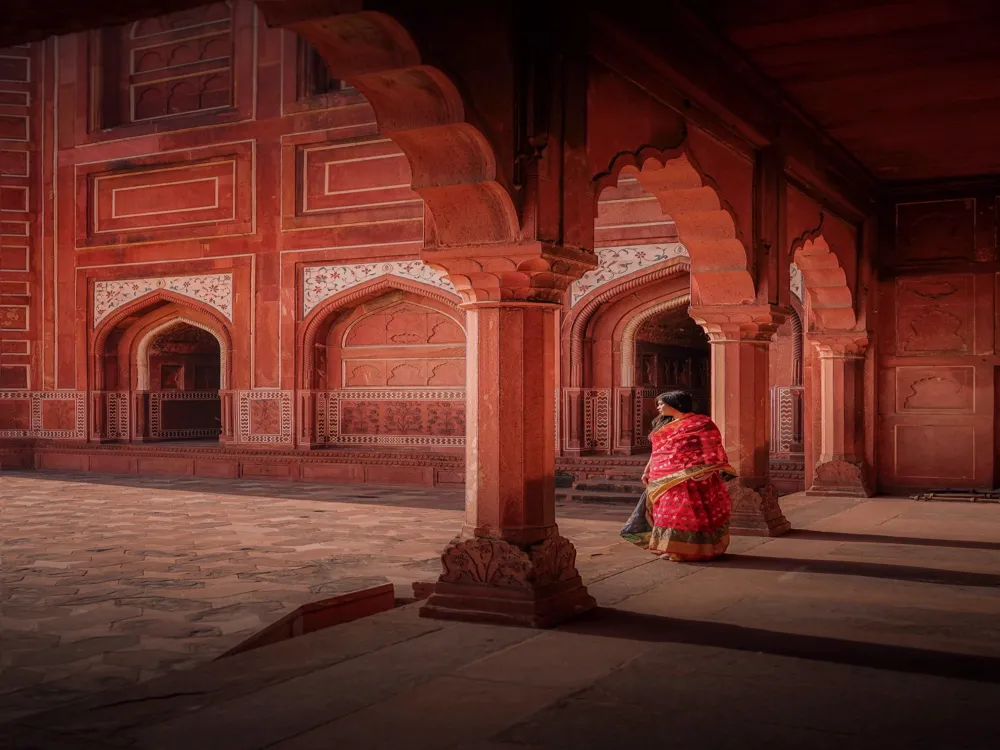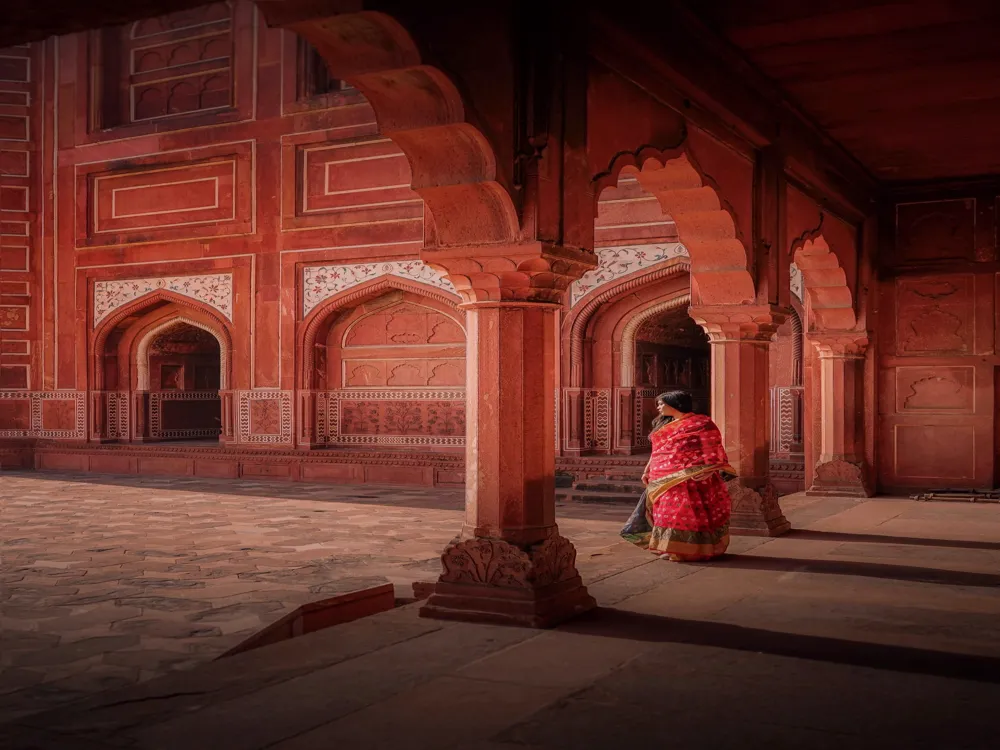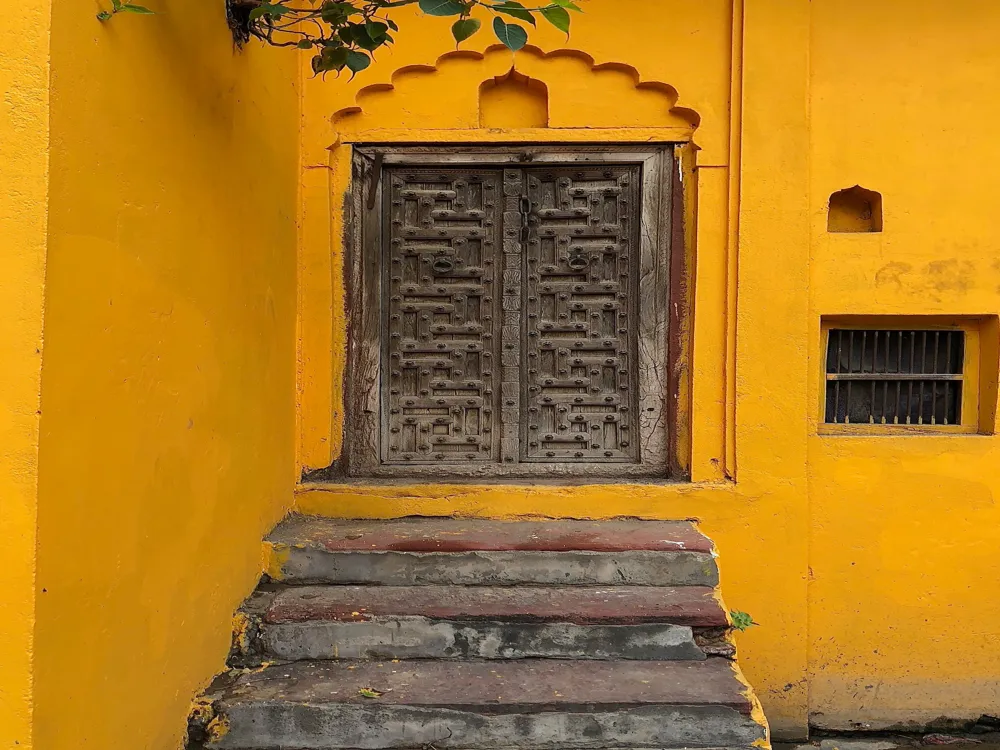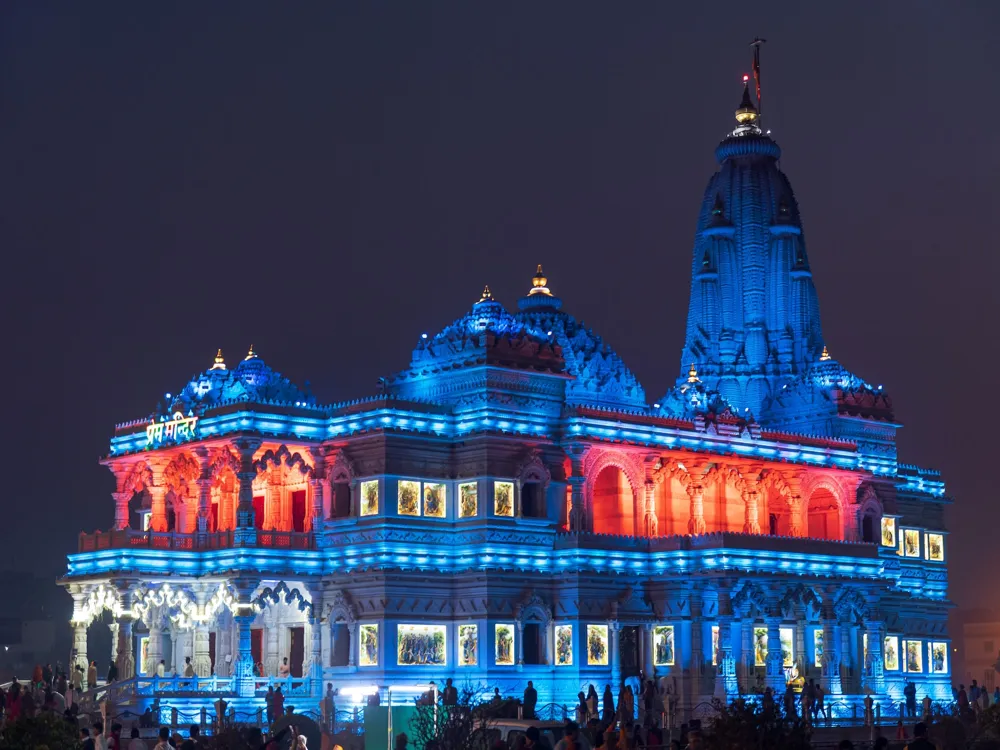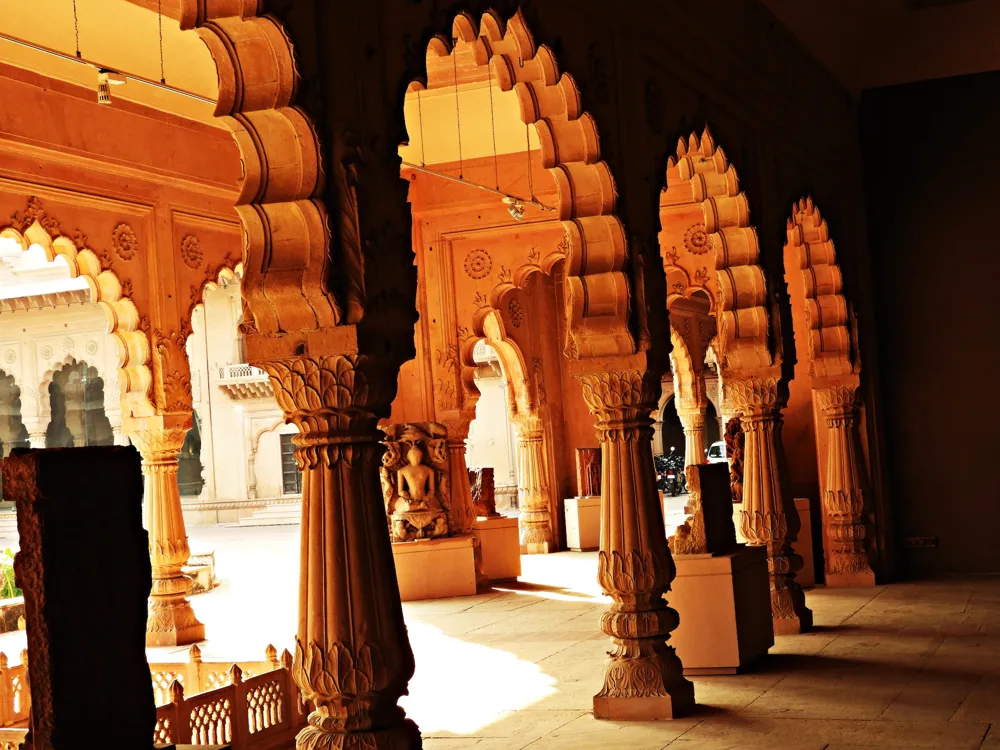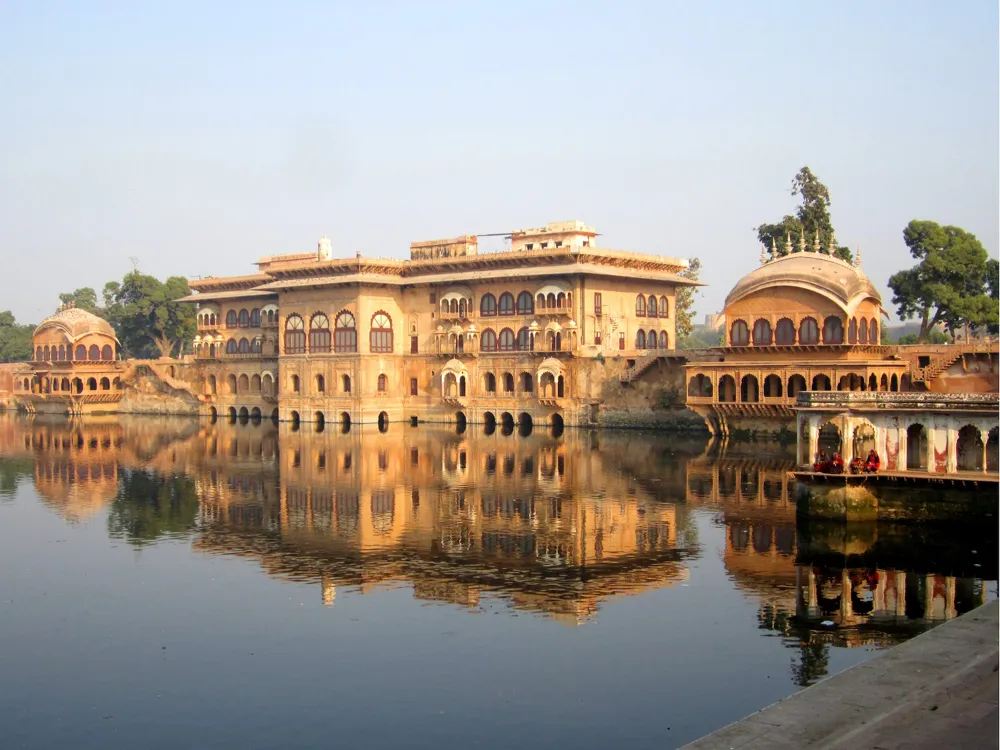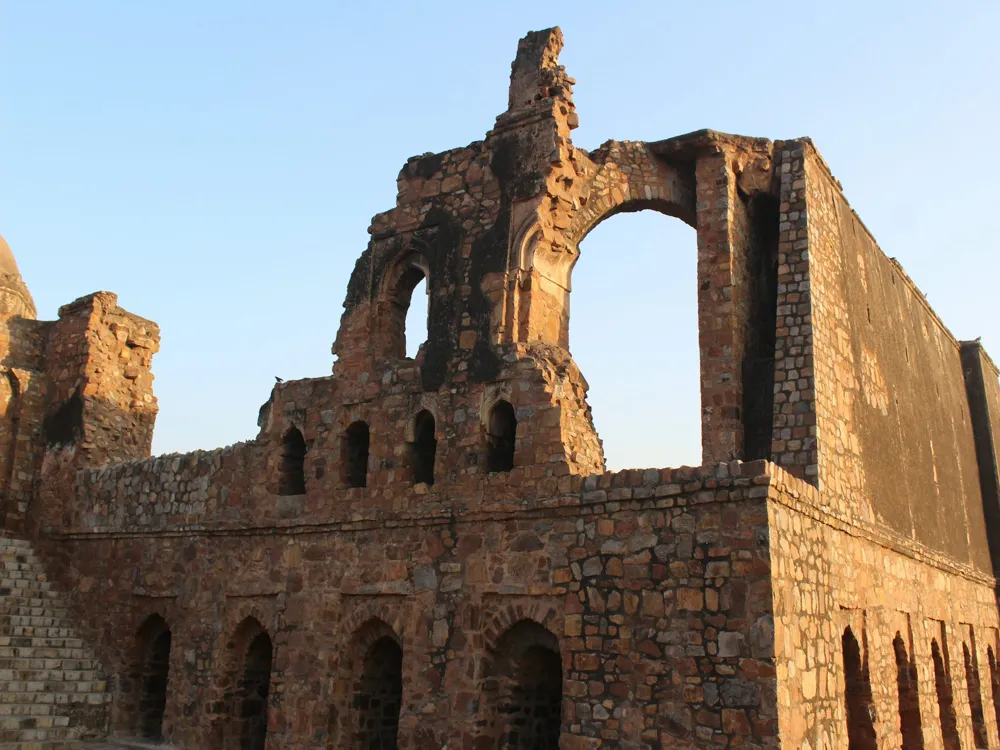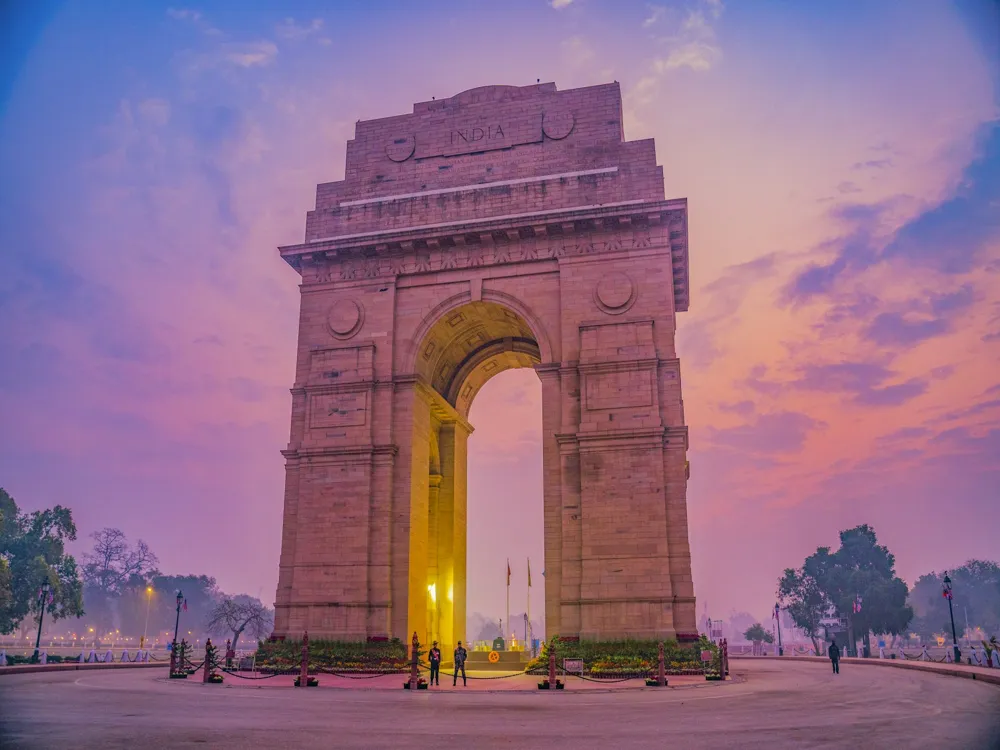Anguri Bagh, a splendid illustration of Mughal architecture and theater design, is located in the heart of Agra, Uttar Pradesh. Erected in the early 17th century by Emperor Shah Jahan, this theater exemplifies the substance and aesthetic sensibilities of the Mughal period. Anguri Bagh, rephrasing to' Grape theater', was part of the larger complex of the Agra Fort and served as a private retreat for the emperor and his cortege . The armature of Anguri Bagh is a masterpiece of Mughal design, intricately blending rudiments of Persian, Islamic, and Indian styles. The theater is laid out in a perfect forecourt, measuring roughly 85 inches on each side, enclosed by high walls. At its center is a large marble kiosk, which was formerly used as a stage for performances and court gatherings. Girding the kiosk are multitudinous cradles, which were a technological phenomenon of their time, designed to cool the air and produce a serene air. The ideal time to visit Anguri Bagh is during the cooler months from November to March. The weather is pleasant, making it comfortable to explore the garden and surrounding areas. Opt for a guided tour to get a deeper insight into the history and architecture of Anguri Bagh. Knowledgeable guides can provide fascinating details that are not commonly known. For photography enthusiasts, the golden hours of sunrise and sunset provide the perfect lighting to capture the beauty of the garden’s architecture. Respect local customs and traditions while visiting. Dress modestly, and be mindful of the cultural significance of the site. Explore the local markets nearby for souvenirs and handcrafted items that reflect the region's rich artistic heritage. Anguri Bagh is easily accessible from the colorful corridor of Agra. It's positioned near the Agra Fort, which is a prominent corner of the megacity. Callers can conclude for original transportation like hacks, bus cabs, or indeed cycle cabs for a further original experience. For those preferring a more comfortable trip, app-rooted hack services are also available. The nearest road station is Agra Cantt, and the megacity is well connected through a network of roads for those driving from near metropolises. Read More:Overview of Anguri Bagh in Agra, Uttar Pradesh
The theater is famed for its symmetrical design, a hallmark of Mughal theater architecture. It's divided into formal quadrants, each filled with vibrant foliage, soothing water features, and intricately designed pathways. This layout reflects the Persian conception of' Chahar Bagh', emblematizing the four auditoriums of paradise described in Islamic textbooks. The use of water in the theater isn't just an aesthetic but also a technological phenomenon, showcasing the advanced engineering chops of the Mughal period.
Over the centuries, Anguri Bagh has witnessed multitudinous literal events and has experienced colorful restorations. moment, it stands not only as a testament to the architectural genius of the Mughals but also as a symbol of India's rich artistic heritage. Callers to Anguri Bagh are transported back in time as they walk through the lush auditoriums and respect the exquisite detail of their design. Architecture of Anguri Bagh
A system of canals connects the pavilion and fountains, emulating the Islamic practice of using water elements in garden architecture.The walkways and paths are adorned with intricate geometric patterns made from multicolored monuments, a fashion known as' Pietra dura', which is also visible in other monuments of the period, like the Taj Mahal.
Each quadrant of the theater is filled with a variety of shops, flowers, and fruit-bearing trees, particularly connections, from which the theater gets its name. The strategic placement of trees and shops wasn't only for aesthetic purposes but also to give shade and cool the terrain. The architectural planning of Anguri Bagh reflects a deep understanding of ecology, aesthetics, and mileage, making it a dateless piece of art and armature.Tips for Visiting Anguri Bagh
Best Time to Visit
Guided Tours
Photography Tips
Local Etiquette
Souvenirs and Local Crafts
How To Reach Anguri Bagh
Anguri Bagh
Agra
Uttar Pradesh
₹ 8,000 onwards
View agra Packages
Weather :
Tags : Garden & Park
Timings : Sunrise - Sunset
Time Required : 1 - 2 hours
Entry Fee : Indians- INR 40
Foreigners- INR 510
Planning a Trip? Ask Your Question
Agra Travel Packages
View All Packages For Agra
Top Hotel Collections for Agra

Private Pool

Luxury Hotels

5-Star Hotels

Pet Friendly
Top Hotels Near Agra
Other Top Ranking Places In Agra
View All Places To Visit In agra
Faq on Agra
What is Anguri Bagh in Agra?
Anguri Bagh is a historical garden located in Agra, India. It is known for its architectural significance and lush greenery.
When was Anguri Bagh built?
Anguri Bagh was built during the reign of Emperor Shah Jahan in the 17th century, as part of the larger Agra Fort complex.
What is the significance of Anguri Bagh?
Anguri Bagh holds historical significance as it was once a part of the Mughal Empire's royal gardens. It showcases the Mughal architectural style and reflects the grandeur of that era.
Is Anguri Bagh open to the public?
Yes, Anguri Bagh is open to the public for visitation. Visitors can explore the garden and admire its beauty and historical charm.
What are the attractions within Anguri Bagh?
Within Anguri Bagh, visitors can find intricate Mughal-era architecture, including marble pavilions, fountains, and beautifully landscaped gardens.
View agra Packages
Weather :
Tags : Garden & Park
Timings : Sunrise - Sunset
Time Required : 1 - 2 hours
Entry Fee : Indians- INR 40
Foreigners- INR 510
Planning a Trip? Ask Your Question
Agra Travel Packages
View All Packages For Agra
Top Hotel Collections for Agra

Private Pool

Luxury Hotels

5-Star Hotels

Pet Friendly
Top Hotels Near Agra
Other Top Ranking Places In Agra
View All Places To Visit In agraFaq on Agra
What is Anguri Bagh in Agra?
Anguri Bagh is a historical garden located in Agra, India. It is known for its architectural significance and lush greenery.
When was Anguri Bagh built?
Anguri Bagh was built during the reign of Emperor Shah Jahan in the 17th century, as part of the larger Agra Fort complex.
What is the significance of Anguri Bagh?
Anguri Bagh holds historical significance as it was once a part of the Mughal Empire's royal gardens. It showcases the Mughal architectural style and reflects the grandeur of that era.
Is Anguri Bagh open to the public?
Yes, Anguri Bagh is open to the public for visitation. Visitors can explore the garden and admire its beauty and historical charm.
What are the attractions within Anguri Bagh?
Within Anguri Bagh, visitors can find intricate Mughal-era architecture, including marble pavilions, fountains, and beautifully landscaped gardens.








